How to Water Succulents in Pots Without Drainage Holes
One of the best things about succulents is that they can grow in almost any kind of planting medium because they’re so adaptable and resilient.
I’ve grown succulents in beautiful teacups, decorative watering cans from the craft store, and even plastic ornaments I’ve hung on my Christmas tree.
Because of this, I know it’s absolutely possible to grow thriving succulents in pots without drainage holes IF you take steps to avoid overwatering.
It’s all about being careful and conservative with your watering frequency!
It can be difficult initially, but with practice, growing succulents in unconventional items like tea cups and terrariums becomes easier.
DIY succulent arrangements, here you come!
In this post, I’ll share tips for watering succulents in pots without drainage holes so you can learn to grow healthy succulents and let your creativity bloom!
Let’s get started!
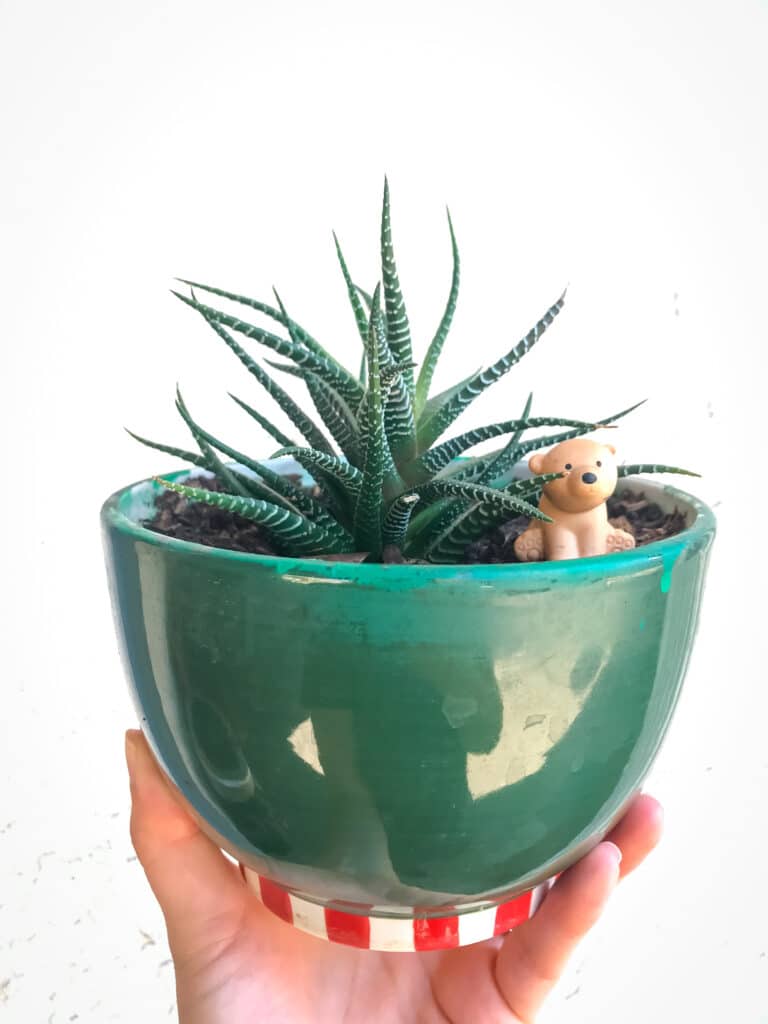
Understanding Succulent Watering Needs
When watering succulents, it’s essential to understand their unique needs.
Succulents are plants that store water in their leaves and stems, which makes them able to withstand long periods of drought.
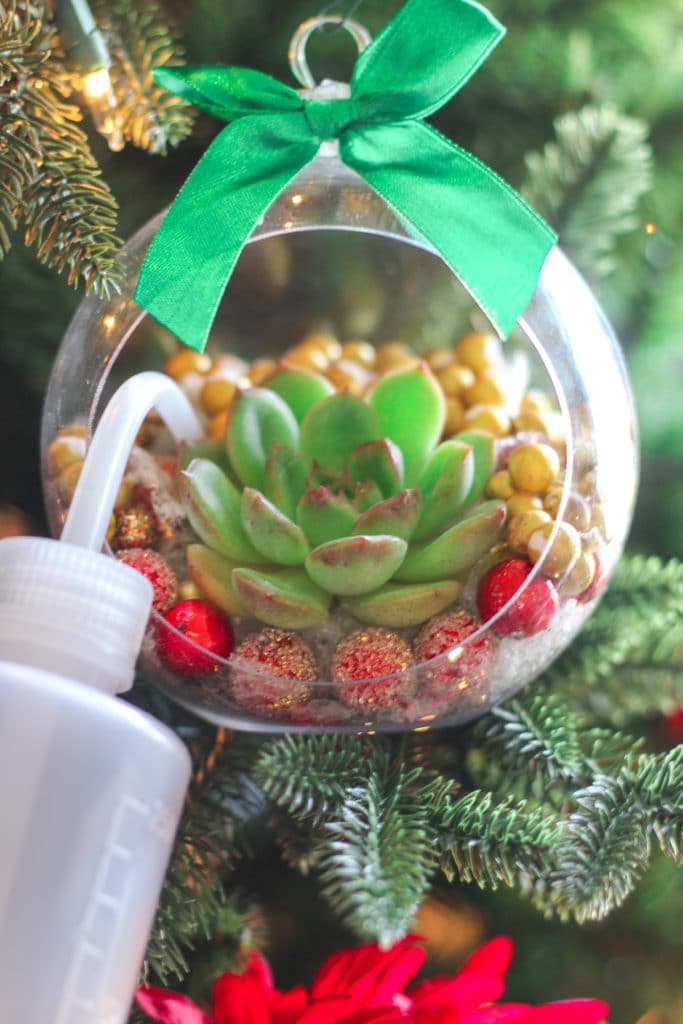
Always keep this in mind when watering your succulents.
After all, overwatering is the most common problem with these plants because people think they need to be watered in the same way as flowers or grass.
Here are some tips to watering your succulents in pots without drainage:
- Water sparingly: Succulents prefer dry soil between waterings, especially indoors, so it’s important to only water when the soil is completely dry.
- Use suitable soil: Succulents need well-draining soil to prevent water from sitting in the pot, especially if there’s no drainage hole. You can create your own succulent soil with this super-easy succulent soil recipe. Otherwise, a commercial cactus mix is perfectly suitable!
- Don’t water deeply: Without a drainage hole, you CANNOT water deeply or generously, especially when growing succulents indoors. You have to water carefully and sparingly since there is no where for excess water to go. When you pour, pour slowly to evenly cover the soil.
- Water the soil, not the leaves: Succulent leaves are prone to rot if left water-logged, so it’s essential to water the soil directly. The root system needs water, which it gets from the soil. The roots then send the water up to the stem and leaves to be stored.
- Adjust watering based on the season: Succulents need less water in the winter when they are dormant (many succulents, however, grow during the winter, like aeoniums, so be mindful of which varieties you have). Still, soil tends to take longer to dry out in the winter. Also, be aware of how quickly heating and ac units dry out the soil in your pots. Adjust your watering schedule accordingly.
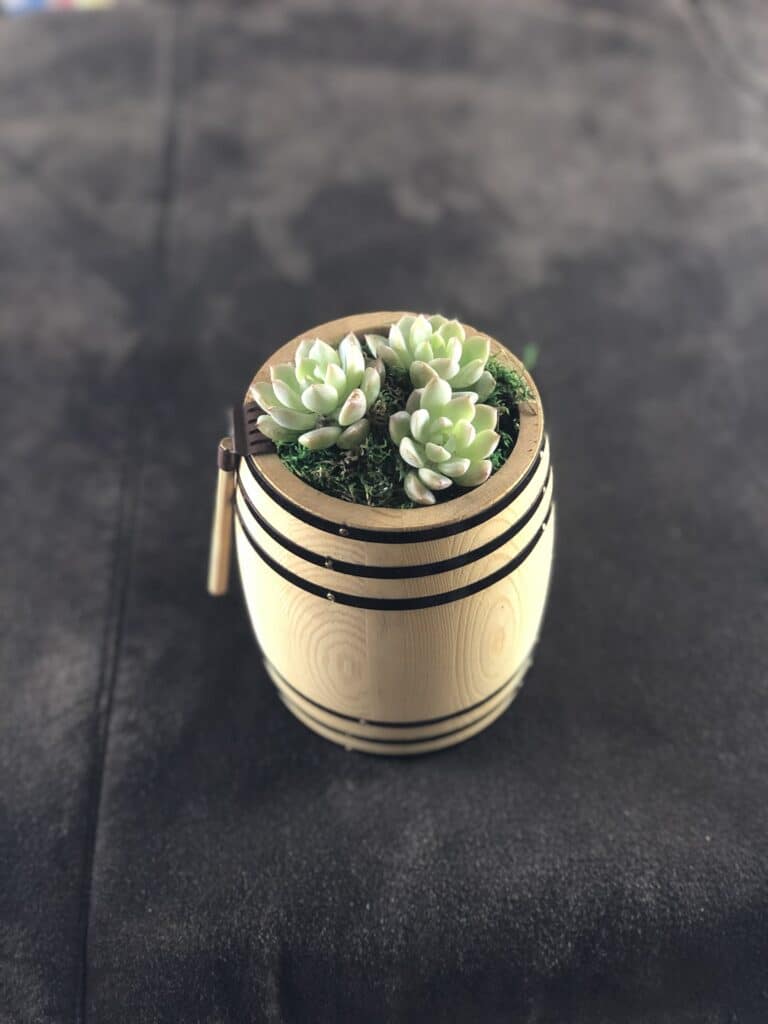
Watering Techniques for Pots Without Drainage
Here are a few more tricks that’ll help you understand how exactly to water succulents without drainage.
Use a Well-Draining Soil Mix
When you’re planting succulents in pots without drainage holes, it’s vital to use a soil mix that drains well.
A well-draining soil mix is essential and easy to find at any garden center. try to avoid potting mix used for flowers
You can also make your own at home by mixing regular potting soil with coarse sand, and perlite or pumice. This simple mix also allows water to move through the soil and prevent it from becoming waterlogged.
Avoid using heavy, clay-like soils or potting soil that retains moisture, as they can quickly suffocate your succulent roots.
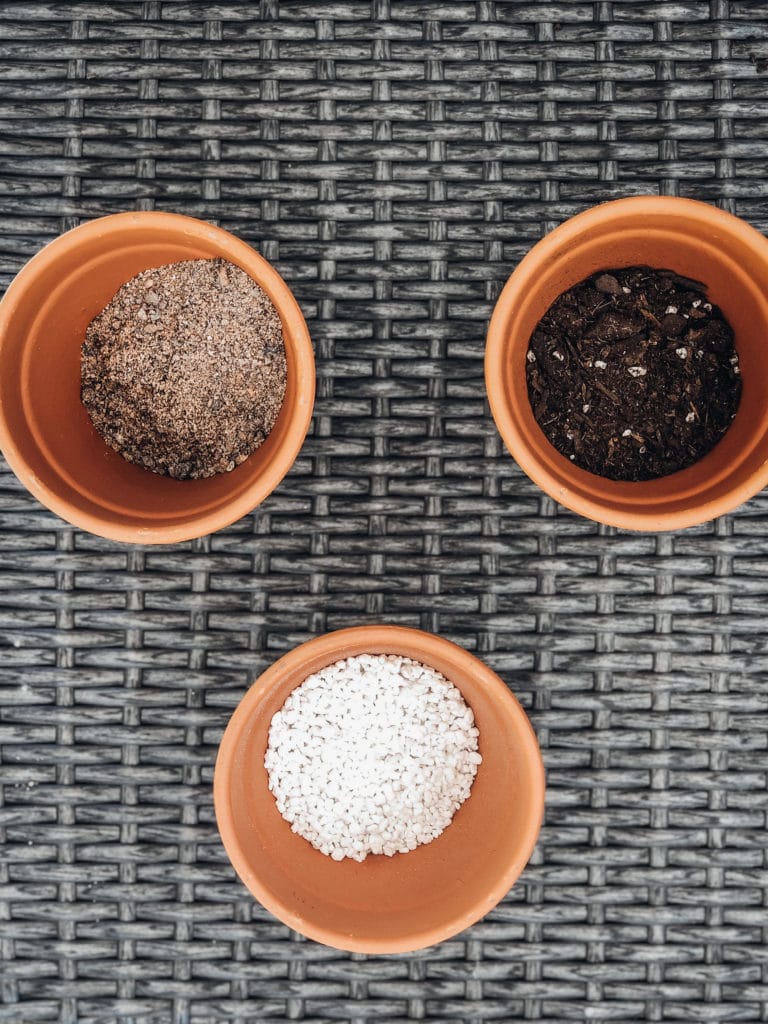
Water Sparingly
This tip is KEY! I believe it’s the most important part to watering without drainage.
When watering succulents in pots with no drainage holes, it’s essential to water sparingly. Overwatering causes root rot and pesky pest problems like icky mealybugs and ants.
(Here’s how to get rid of mealybugs if that happens).
Since overwatering can happen easily with unconventional planting mediums, water ONLY when the soil is completely dry, from top to bottom. This advice is mostly for indoor succulents, though. You DO NOT have to be so strict when watering outdoor succulents.
For outdoor succulents that are exposed to the elements, you can water more regularly because the threat of overwatering is reduced due to the effects of sun and evaporation. Heat will dry out the soil faster than indoors, so overwatering is less likely to cause problems.
Monitoring and Adjusting Your Watering Schedule
It’s essential to monitor and adjust your watering schedule when watering succulents in pots without drainage holes.
It’s what will help you avoid overwatering and underwatering your plants. Keep a watchful eye!
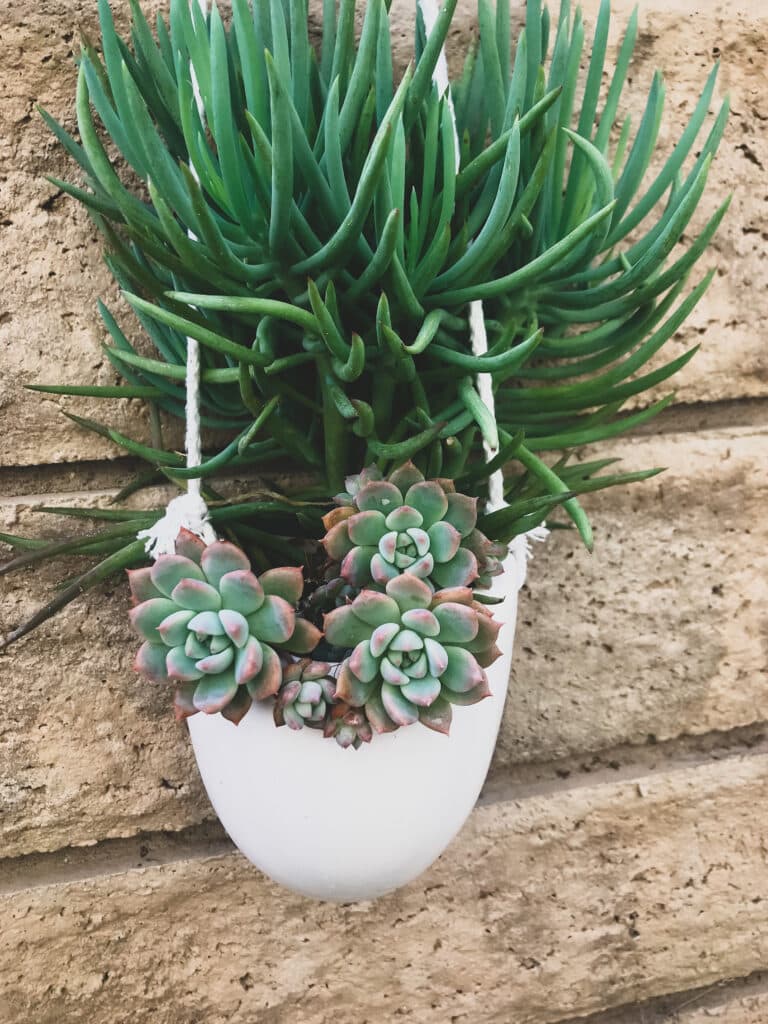
These tips will help you understand how to adjust your watering frequency:
- Check the soil moisture weekly: Stick your finger into the soil. If the soil feels dry, it’s time to water your succulent. If it feels moist, wait a few more days before checking again.
- Adjust your watering frequency: Your watering schedule will depend on the temperature, humidity, and sunlight your succulent is getting. During hot, dry weather, you may need to water your succulent more often than during cooler, more humid weather. It all depends on how quickly your soil dries out!
- Use a moisture meter: This little tool is incredibly helpful for all types of plants. If you’re not confident in your ability to judge the soil moisture by touch just yet (totally fine!), you can use a moisture meter to help you! Just insert the probe into the soil and read the moisture level on the meter. It’s super quick and simple.
- Watch for signs of overwatering or underwatering: If your succulent is getting too much water, the leaves may start to turn yellow or transluscent and feel mushy to the touch. Succulent leaves should feel firm, not soft. If it’s not getting enough water, the leaves may start to shrivel and feel dry, which are signs of underwatering.
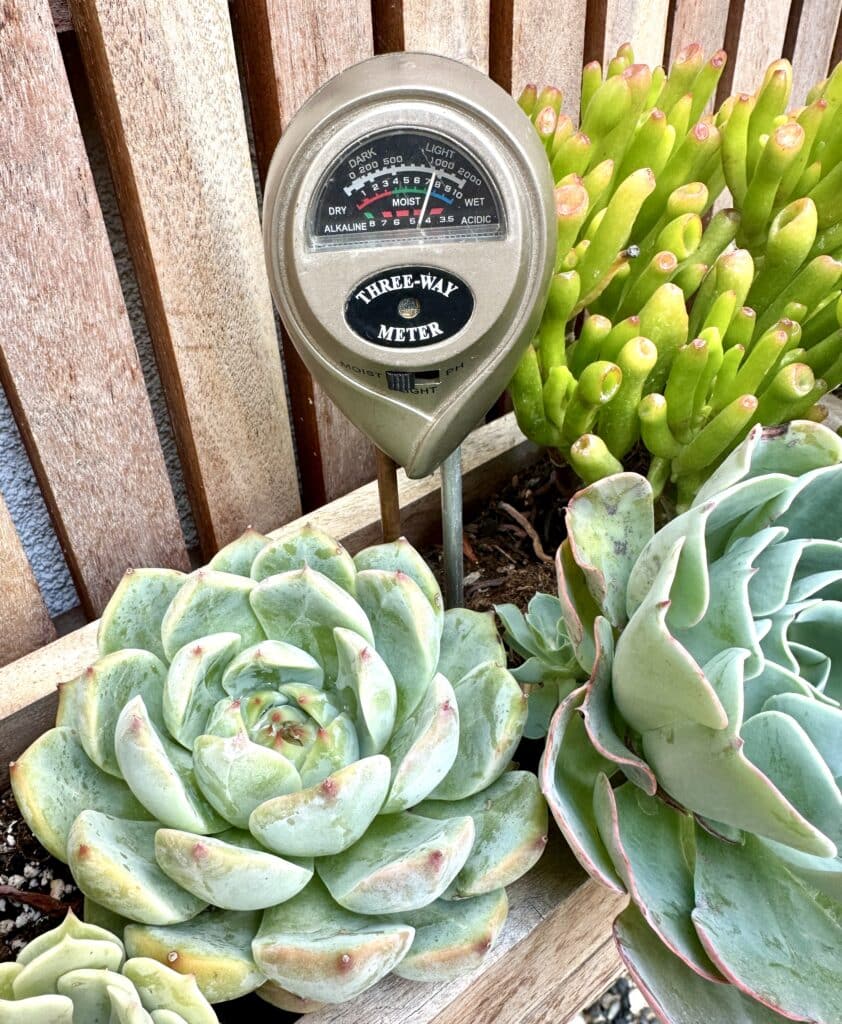
Troubleshooting Common Watering Issues
Overwatering Signs and Solutions
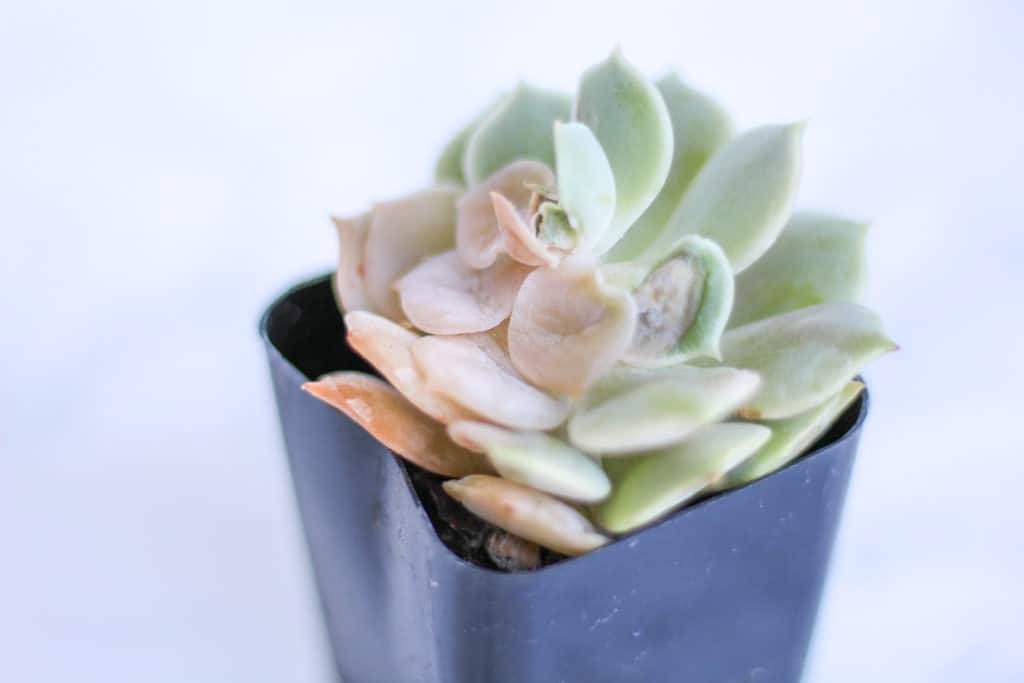
Overwatering is something you want to avoid or you’ll end up with a rotting succulent like the one pictured above.
The leaves are turning yellow and rotting, which indicates a rotting stem and root system.
If you have already overwatered your succulent, try the following solutions as soon as possible:
- Stop watering for several days. Let the soil dry out completely.
- Take the plant out of the pot to help the soil and roots dry out more quickly
- If the roots are already damaged, you may need to trim off any rotting or mushy parts before repotting.
- If any leaves are starting to turn yellow or translucent, you’ll need to throw those out too – they won’t return to their previous healthy state
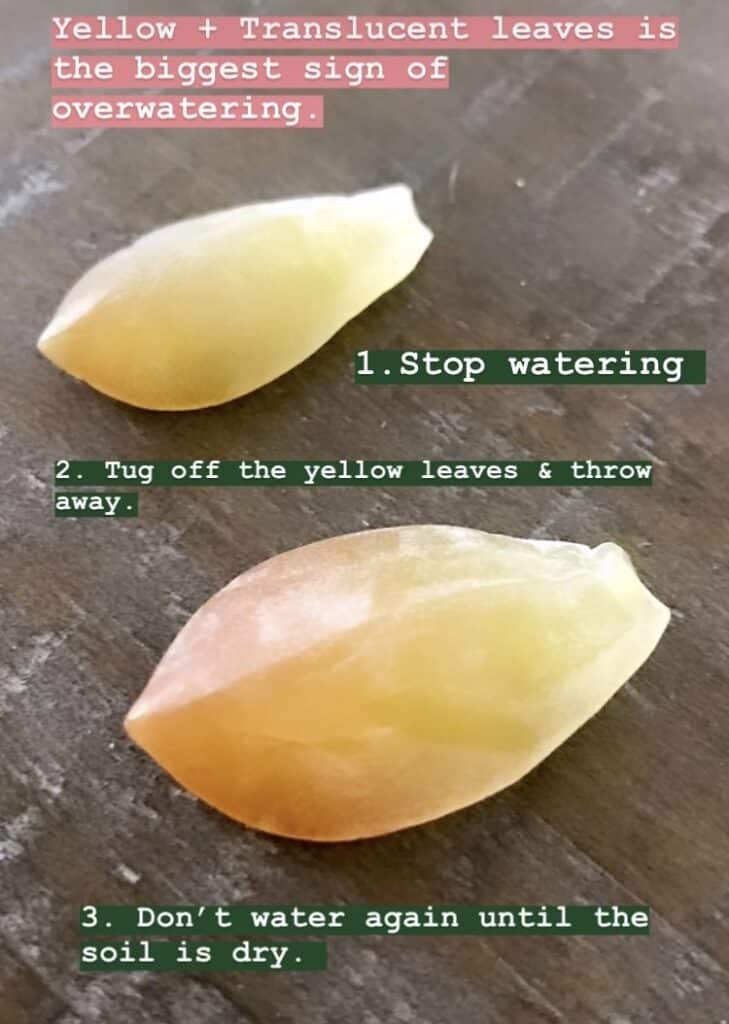
Underwatering Signs and Solutions
Underwatering is a common issue that can harm your succulent plants. Signs of underwatering include wrinkled leaves, roots growing on the stem outside of the soil, and a wilted appearance.
Keep in mind, though, that dry leaves at the bottom base of a succulent are a normal process in the succulent growing cycle.
As the succulent grows new leaves from the center of the plant, the lower leaves begin to dry out to make way for new life.
You can gently tug off these leaves and discard them.
If you notice brown leaves growing from the center of the plant, however, you have an underwatering problem that should be addressed immediately.
To prevent underwatering, stick to your watering schedule by feeling for moisture weekly. Don’t let weeks go by without watering your succulents.
Remember that while drought-tolerant, succulents must still be watered to look and grow their best!
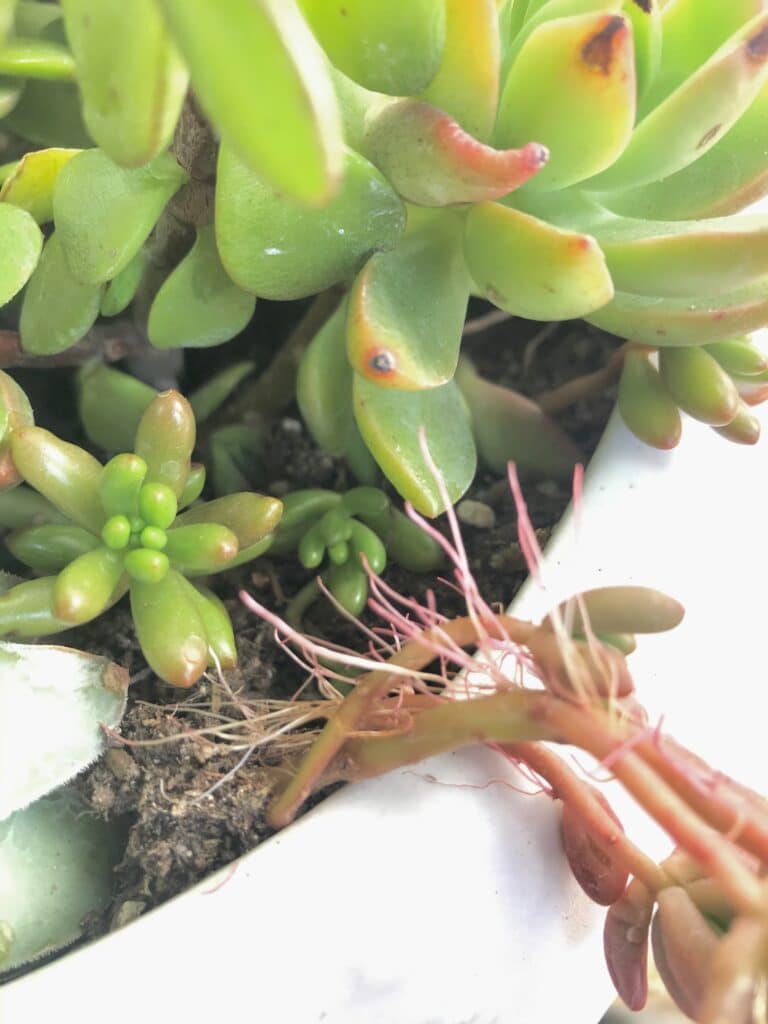
If you have already underwatered your succulent, you can try the following solutions:
- Water your plant immediately, making sure that the water soaks the soil in the pot.
- Check on the soil the next day or the next few days. Does it feel dry? Water again.
- You may need to water more frequently if your soil dries out quickly. Adjust your watering schedule as needed.
These simple tips are super helpful when watering succulents in pots without drainage. Remember to water only when the soil feels dry, and monitor your succulents regularly; it’s the best way to keep them healthy and looking beautiful year-round. Good luck!
WANT TO LEARN MORE ABOUT SUCCULENTS?
I’ve got you covered with more succulent care posts plus craft posts, too!
Best Full Sun Succulents for a Beautiful Outdoor Garden
The Best Succulent Plants for Indoors
DIY Succulent Arrangements: Fun and Easy Ideas for Your Home
Why are My Succulent Leaves Shriveling?
Do Succulents Die After Flowering?
How to Make a Fairy Garden Using Succulents
How to Water Succulents
How to Care for a Jade Plant
How to Fertilize Succulents
How to Get Rid of Mealybugs on Succulents
What’s Wrong with My Succulent?